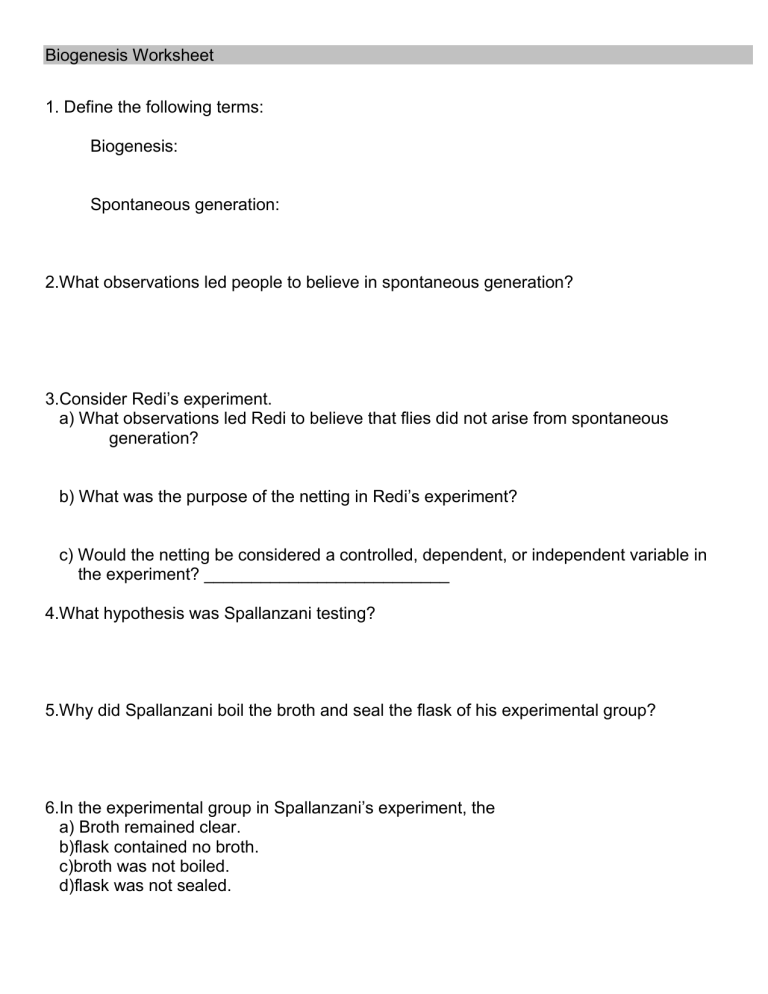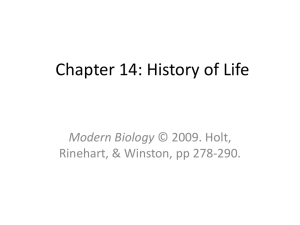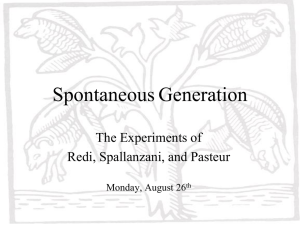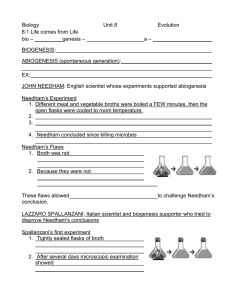
Biogenesis Worksheet 1. Define the following terms: Biogenesis: Spontaneous generation: 2.What observations led people to believe in spontaneous generation? 3.Consider Redi’s experiment. a) What observations led Redi to believe that flies did not arise from spontaneous generation? b) What was the purpose of the netting in Redi’s experiment? c) Would the netting be considered a controlled, dependent, or independent variable in the experiment? __________________________ 4.What hypothesis was Spallanzani testing? 5.Why did Spallanzani boil the broth and seal the flask of his experimental group? 6.In the experimental group in Spallanzani’s experiment, the a) Broth remained clear. b)flask contained no broth. c)broth was not boiled. d)flask was not sealed. 7.The flasks shown above illustrate the control and experimental groups from Spallanzani’s experiment. Some flasks may be part of more than one answer. a) Which flasks would be found in Spallanzani’s control group? ____, ____, ____ b) What is the correct sequence for these control flasks? ____, ____, ____ c)Which flasks would be found in Spallanzani’s experimental group? ____, ____, ____ d) What is the correct sequence for these experimental flasks? ____, ____ ____ 8.Spallanzani’s opponents disagreed with his conclusion that microorganisms from the air contaminated the boiled meat broth. They argued that Spallanzani: A.heated the flasks too long, killing the microorganisms in the broth. B.heated the flasks too long, destroying the “vital force” in the air inside the flasks. C.waited too long before he sealed the flasks after heating them. D.accidentally contaminated the broth when he sealed the flasks. 9.What was the crucial difference between Pasteur’s experiment and Spallanzani’s that made Pasteur more successful at disproving spontaneous generation? 10.What would have happened if Pasteur had tipped one of his flasks so that the broth in the flask came into contact with the curve of the neck?



